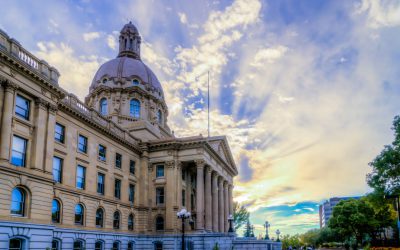From Janauary 24 to 26, and February 7 to 10, 2025, we surveyed Albertans and British Columbians on downtown cores in their province.
Highlights of our survey include…
Recent Leger polling data reveals that residents in both Alberta and BC remain highly engaged with their downtown cores:
- A majority of BC (84%) and Alberta (79%) residents have visited within the past six months
- The most common reasons for visitation in both provinces are shopping (47% BC; 30% AB) and dining (26% BC; 19% AB)
- Expensive parking is cited by BC (42%) and Alberta (49%) residents as one of the top reasons for not visiting. Albertans also cite safety (38%) at elevated rates while BC residents commonly cite distance (35%).
Despite high visitation rates, public perception of downtown areas is overwhelmingly negative:
- Half of BC (53%) and Alberta (48%) residents believe their nearest downtown core has declined over the past year
- The most frequently cited reasons for decline include homelessness (84% BC; 82% AB) and drug addiction (84% BC; 80% AB)
Crime and safety concerns remain a critical issue in downtown cores:
- Two-in-five BC (40%) and Alberta (41%) residents report that they or someone close to them has experienced crime or a dangerous situation in a downtown core in the past six months, with younger populations (18-34) in both provinces being more likely to report experiences.
- The most common concerns include fear for personal safety and encounters (26% BC; 27% AB) and aggressive behavior (21% BC; 21% AB)
Downtown visitation remains relatively strong despite persistent challenges, particularly in Vancouver, Kelowna, and Victoria where a majority of residents have visited in the past week. However, shifting public perceptions and addressing key issues such as affordability, safety, and homelessness will be critical in determining the long-term viability and attractiveness of Alberta and BC’s downtown cores.
Methodology
This web survey was conducted from January 24 to 26, 2025, with 1,002 Albertans, and February 7 to 10, 2025, with 1,534 British Columbians, and from aged 18 or older, randomly recruited from LEO’s online panel. A margin of error cannot be associated with a non-probability sample in a panel survey. For comparison, a probability sample of 1,002 respondents would have a margin of error of ±3.1 %, and a probability sample of 1,534 respondents would have a margin of error of ±2.5 %, 19 times out of 20.




